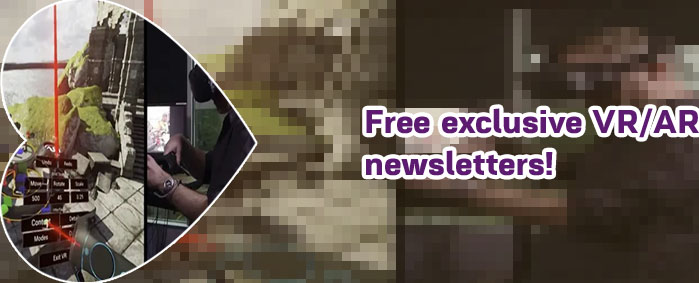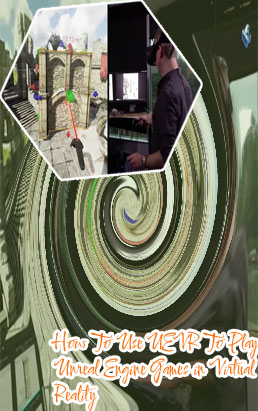
|
|
App casino software design companyCasino online software development firmsPoker fintech choosing a cloud services providerAndroid game developmentEvolution baccarat automation softwareBest game web development company servicesCasino online web and mobile application development companyBest gaming software companiesMobile casino Web DevelopmentGambling blockchain application developmentCash casino software development solutionsCash casino development services companyBlackjack software freeIGaming development firmGamble web developer meaningIgaming products gamemaker subscription model for developers
Ar app unreal engineAugmented Reality (AR) technology has become increasingly popular in recent years, with Unreal Engine being a powerful tool for creating immersive AR experiences. In order to fully utilize the capabilities of AR in Unreal Engine, it is important to stay informed about the latest developments and best practices. The following list of articles will provide valuable insights and tips for implementing AR in Unreal Engine, helping you to create engaging and interactive AR applications. How to Create AR Content with Unreal Engine
Augmented Reality (AR) has become increasingly popular in recent years, allowing users to experience digital content in the real world. One of the leading tools for creating AR content is Unreal Engine, a powerful game development platform that can also be used for creating immersive AR experiences. In this article, we will delve into the process of creating AR content with Unreal Engine, exploring the various tools and techniques that can be utilized to bring your ideas to life. To begin creating AR content with Unreal Engine, users must first familiarize themselves with the software's interface and functionality. Unreal Engine offers a range of features that make it ideal for developing AR applications, such as its robust 3D rendering capabilities and support for advanced visual effects. Users can also take advantage of the platform's Blueprints system, which allows for the creation of interactive elements within AR experiences. Another key aspect of creating AR content with Unreal Engine is the use of ARKit and ARCore, which are software development kits that enable developers to integrate AR functionality into their applications. By leveraging these tools, users can create AR experiences that are compatible with a wide range of devices, including smartphones and tablets. Overall, Unreal Engine provides a comprehensive set of tools for creating AR content that is both engaging and immersive. By following the steps outlined Tips for Optimizing AR Performance in Unreal EngineAugmented Reality (AR) has become increasingly popular in the world of gaming, education, and various other industries. Unreal Engine, a powerful game development platform, provides a great tool for creating immersive AR experiences. However, optimizing AR performance in Unreal Engine can be a challenging task, especially for beginners. One key tip for improving AR performance in Unreal Engine is to carefully manage your assets. This includes optimizing textures, models, and materials to ensure that they are not too heavy for the system to handle. By reducing the complexity of your assets, you can improve rendering speed and overall performance. Another important factor to consider is the use of Level of Detail (LOD) settings. LOD allows you to create multiple versions of an asset with varying levels of detail, which can help improve performance by only rendering the most detailed version when necessary. Additionally, utilizing occlusion culling can significantly boost AR performance by only rendering objects that are within the user's field of view. This technique helps to reduce the number of objects that need to be rendered at any given time, resulting in smoother gameplay and better overall performance. In conclusion, optimizing AR performance in Unreal Engine requires careful asset management, LOD settings, and occlusion culling. By following these tips, developers can create more immersive and engaging AR Exploring ARKit and ARCore Integration in Unreal EngineAugmented Reality (AR) technology has been rapidly advancing, and developers are constantly looking for ways to incorporate it into their projects. With the rise of ARKit and ARCore, two powerful AR development platforms, integrating AR functionality into Unreal Engine has become more accessible than ever. One of the key benefits of using ARKit and ARCore integration in Unreal Engine is the ability to create immersive AR experiences that blend digital content with the real world. This opens up a world of possibilities for developers looking to create interactive games, educational apps, or marketing experiences that engage users in new and exciting ways. Here are a few key features and benefits of exploring ARKit and ARCore integration in Unreal Engine:
Utilizing Blueprints for AR Interactions in Unreal EngineUtilizing Blueprints for AR Interactions in Unreal Engine can greatly enhance the user experience and functionality of augmented reality applications. Blueprints in Unreal Engine provide a visual scripting system that allows developers to create complex interactions without the need for traditional coding. This is especially helpful for those new to game development or AR design, as it offers a more intuitive approach to creating interactive elements. By utilizing Blueprints, developers can easily incorporate touch controls, gestures, animations, and other interactive features into their AR projects. This allows for a more immersive and engaging experience for users, making the application more dynamic and compelling. Blueprints also offer a high level of customization, allowing developers to tailor interactions to fit the specific needs of their project. Overall, Blueprints for AR Interactions in Unreal Engine offers a powerful and versatile tool for creating interactive augmented reality experiences. Whether you are a beginner looking to get started in AR development or an experienced developer seeking to streamline your workflow, utilizing Blueprints can help you bring your AR projects to life with ease and efficiency. This topic is important and necessary for developers, designers, and creators working on AR projects who want to enhance user interactions and functionality in their applications. |
Top 10 betting sitesPopularity of Online Casinos in AustraliaAviator betting appsBiotechnology software$15 no deposit bonus casino maxBc game crypto casino games
Virtual casino website development companiesCasino private software developmentGame software servicesGambling product design websiteGame software developers companiesCasino web development agenciesCasino it development companyGame development firmCasino development software companyPlaytech mobile casinoCasino ios development companySlot softwareSoftware for online casinoPoker softwareBest igaming softwareGame design software listIGaming best web development companyApp casino development companyIGaming development agencyGaming softwareGambling development agencyMobile game design softwareBest gambling web app development companyUnity game makerIgaming development servicesPoker private software developmentGames made on unreal engineIGaming blockchain software development companyUnreal engine app developmentBest slot providersLogitech steering wheel softwareFromsoftware next gameGambling company softwareCasino platform softwareIgaming payment solutionsIGaming software application development companyMobile game developmentCasino web developmentGame maker online
|
||||||||||||||||||||||
| ©1999-2006 OCD. All Rights reserved |